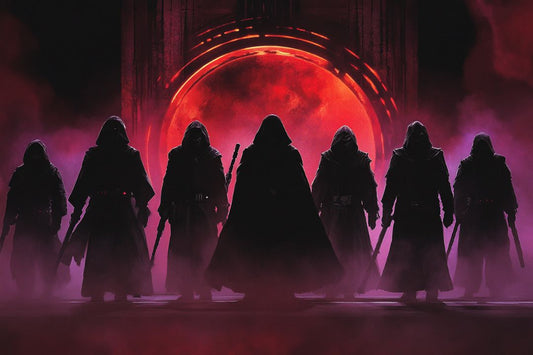In the expansive Star Wars universe, where tales of heroism and villainy unfold, the iconic lightsaber has captured our collective imagination for generations. These energy blades, brandished by both virtuous Jedi and malevolent Sith, symbolise power, valour, and the age-old conflict between the light and dark sides of the Force. For decades, the prevailing wisdom asserted that red lightsabers, the weapon of choice for the Sith, held unmatched offensive potential. The crimson hue seemed synonymous with the aggressive tendencies of the Dark Side, suggesting that their power was unparalleled.
However, a groundbreaking study conducted at the University of Leicester’s Centre for Interdisciplinary Science challenges these long-held assumptions. The study suggests that, against all expectations, red lightsabers may actually be the weakest of the lot. This revelation invited us to venture beyond the realms of science fiction and embark on a journey of scientific exploration.
The Calculations That Defied Tradition
Enter Luke Willcock, the mastermind behind this revelatory study. Drawing inspiration from Qui-Gon Jinn’s memorable moment in ‘The Phantom Menace’ when he effortlessly sliced through a metal door using his green lightsaber, Willcocks embarked on a mission to uncover the secrets of lightsaber strength in relation to their colours. By using the energy output required for this remarkable feat as a starting point, Willcoacks delved deep into the calculations. His findings were nothing short of astounding: the standard lightsaber, with all its brilliance, produces an energy output of 6.96 megawatts enough power to light up around 700,000 LED light bulbs or power around 5000 houses for a day.
Colouring the Equation
However, the study’s most remarkable revelations came when colour was introduced into the equation. Willcocks postulated that lightsabers harnessed pure photonic energy and proceeded to explore the effects of different spectral wavelengths. What he uncovered was a revelation that challenged existing conventions. Shorter wavelengths, it turned out, correlated with more potent photon blades. Within this spectrum, it was the purple lightsabers that stood out as the epitome of power. Willcocks’ calculations indicated that the purple lightsaber wielded by Jedi Master Mace Windu could potentially be nearly twice as powerful as the red lightsabers favoured by the Sith. The implications were astonishing – a Jedi equipped with a purple lightsaber could conceivably cut through a starship blast-door in a mere 8.2 seconds.
It’s important to note the context of the study. Willcocks’ research was conducted with a healthy dose of fun in mind. The University of Leicester’s approach encourages budding scientists to explore scientific concepts with popular culture and articulate them in a way that resonates with non-experts. While not officially integrated into the Star Wars canon, Willcocks’ work provokes thought-provoking questions about the true mechanics of lightsabers and how their power might be quantified.
Echoes in Star Wars Narratives
Strangely, Willcocks’ theory about the vulnerabilities and volatility of Sith lightsabers finds an echo in recent Star Wars narratives. The novel ‘Ahsoka’ delves into the process of a Jedi forging a bond with a unique kyber crystal, essential for lightsaber creation. In contrast, Dark Jedi, devoid of such a connection, resort to unconventional methods that often involve manipulating or stealing another Jedi’s crystal. This process, the novel suggests, weakens the crystal, resulting in its characteristic red hue – a phenomenon known as ‘bleeding.’ Furthermore, the unstable nature of Sith lightsabers gains prominence through Kylo Ren’s cross-guard lightsaber, which employs a cracked kyber crystal and a cross-guard design to dissipate excessive energy.
A Universe of Possibilities
While Star Wars aficionados await further revelations in the ongoing saga, the University of Leicester’s enlightening study serves as a reminder that even in realms of science fiction, scientific curiosity knows no bounds. Whether red lightsabers remain relegated to the bottom rung or new narratives emerge to reshape their perception, one constant endures: the Force continues to harbour enigmas waiting to be uncovered by the insatiable curiosity of both Jedi and Sith enthusiasts.



